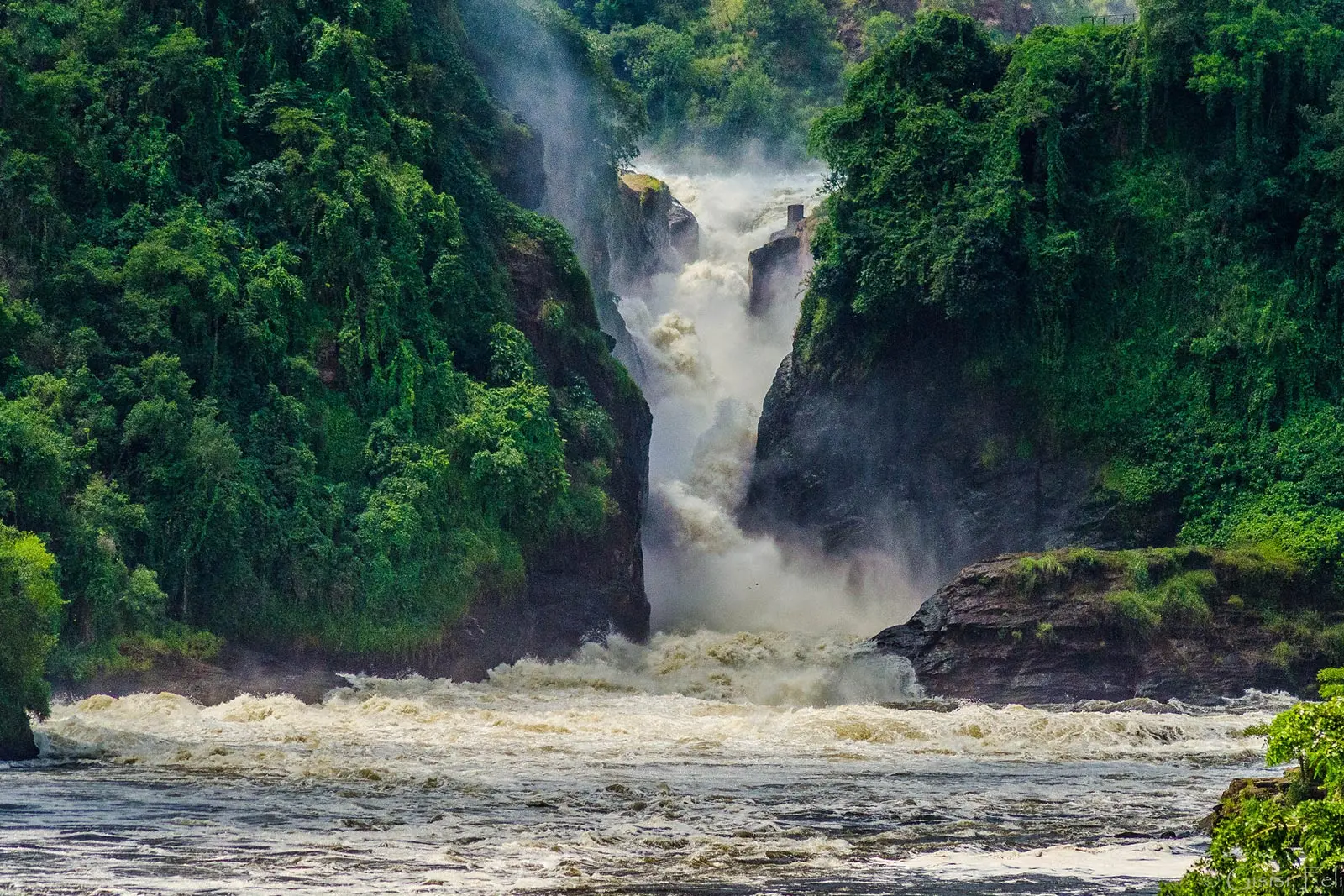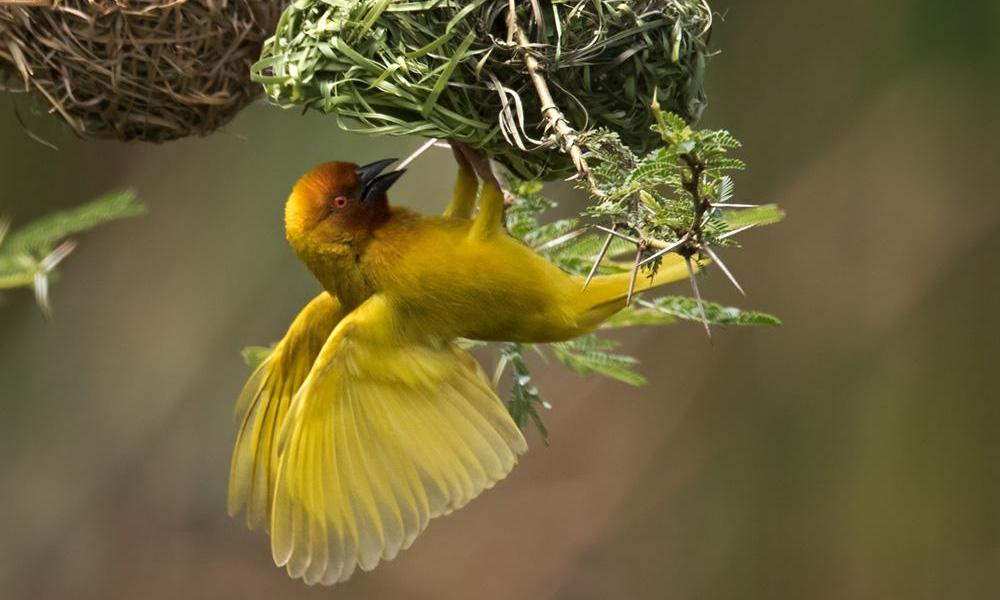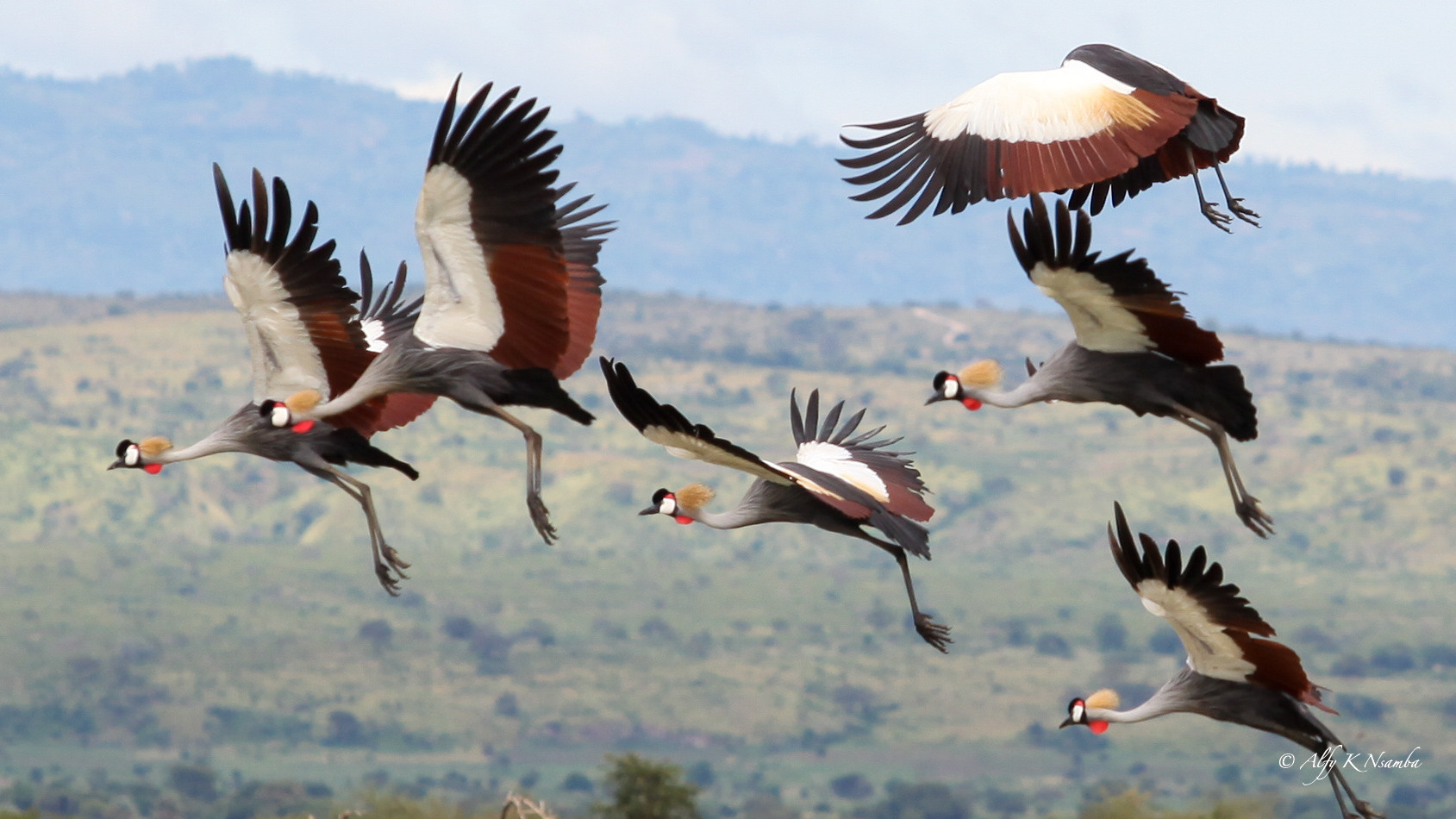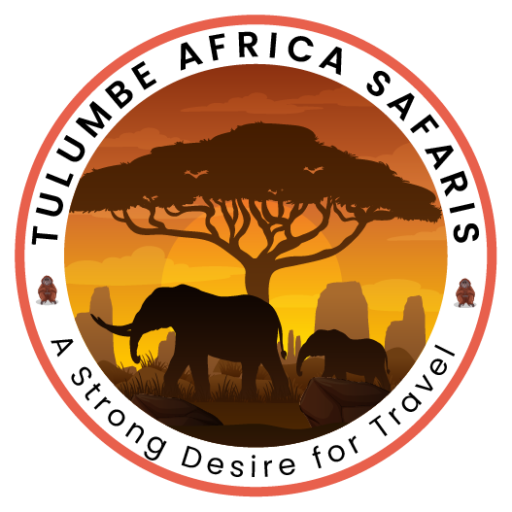Experience the thrill of a lifetime with a Mabamba Bay Shoebill Stork sighting! Nestled in the heart of Uganda, Mabamba Bay is a hidden gem for bird enthusiasts and nature lovers. And at the top of every birder’s bucket list is the magnificent Shoebill Stork, a rare and iconic bird species found in the wetlands of Mabamba Bay.
With its distinctively large shoe-shaped bill and towering height, the Shoebill Stork is a sight to behold. Its prehistoric appearance and unique feeding behavior make it a fascinating subject for wildlife photographers and birdwatchers alike. Imagine the excitement of spotting this elusive and majestic bird in its natural habitat, gracefully gliding through the marshes or patiently waiting for its prey to emerge.
Join us on an unforgettable journey to Mabamba Bay, where you’ll have the opportunity to witness the awe-inspiring beauty of the Shoebill Stork up close. Our experienced guides from Tulumbe Africa Safaris will navigate the waterways and marshes, leading you to prime viewing locations and ensuring an incredible birdwatching experience. Don’t miss out on this extraordinary adventure as you unravel the secrets of Mabamba Bay and encounter the legendary Shoebill Stork in all its glory.
Overview of the Shoebill Stork
The Shoebill Stork is a remarkable avian species that has been the subject of numerous sightings and studies. It is an endangered species with a very limited habitat range, mainly located in sub-Saharan Africa. The species’ conservation status has been classified as vulnerable due to threats from human activities such as deforestation and wetland drainage for agriculture. Studies have also documented instances of bycatch mortality in gillnets and direct persecution by humans.
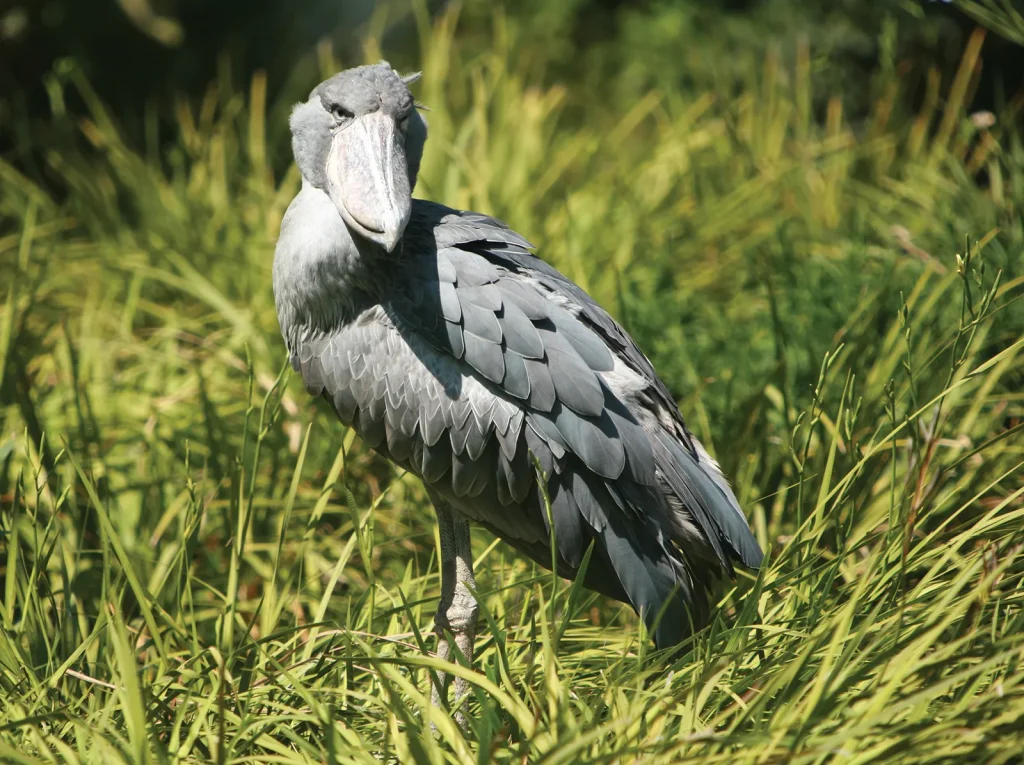
The Shoebill Stork’s habitats are typically permanent wetlands, including swamps, floodplains, and seasonal pans which contain fish populations for them to feed upon. To ensure its survival it is essential that these habitats be conserved. Conservation efforts include the protection of wetlands through national legislation, preventing unsustainable agricultural practices which can degrade habitat quality, and controlling levels of hunting pressure on the species.
Various projects have been created to help protect this endangered species from extinction and raise awareness about their plight among local communities living near potential Shoebill Stork habitats. They involve research into population dynamics, ecology, movements and behavior; surveys to evaluate population size; education initiatives targeting local communities; supportive actions towards existing birdwatching ventures; and conservation action plans based on scientific evidence.
Where to Find the Mabamba Bay
Located in the wetlands of Uganda, this rare avian species is a sight to behold. Mabamba Bay is one of the most popular and accessible locations for birdwatching and spotting the elusive shoebill stork, an endangered species native to East Africa. It is easy to see why it has become such a sought-after destination for bird watchers from around the globe.

Here are a few reasons why:
- The shallow waters of Mabamba Bay are ideal for spotting shoebills in their natural habitat as they look for food.
- There are plenty of guided tours available that can take you out on the lake and give you a chance to observe these majestic birds in their element.
- A variety of aquatic plants offer an excellent source of shelter and nutrition for shoebills, making them easier to spot.
- Birders may also find other unique species such as papyrus gonolek, black crakes, African pygmy geese, and many more!
Mabamba Bay is home to some of the largest populations of shoebill storks on Earth and offers stunning views across its vast expanse. With proper guidance from experienced guides or local experts, visitors can make sure they get an optimal wildlife experience while being mindful not to disturb these beautiful creatures or their environment.
Tips for the Best Shoebill Stork Sighting
Visiting Mabamba Bay offers a unique opportunity to witness the majestic beauty of shoebill storks in their natural habitat. As such, it is important for visitors to abide by certain birdwatching etiquette and practice responsible tourism when attempting to view these beautiful birds.
When observing the shoebill stork, one must remain silent and still at all times as loud noises or sudden movements may scare away the birds. Additionally, visitors should never attempt to feed or touch the wild creatures in order to minimize disruption of their ecosystem and promote conservation efforts.
It is also essential that tourists remain a respectful distance from any wildlife they encounter. It is best for observers not to get too close as this may cause stress for the animals being observed and could result in injury if they become startled or aggressive. Moreover, binoculars and spotting scopes are highly recommended pieces of equipment which allow viewers to enjoy an intimate experience without invading the space of the birds.
To ensure a successful sighting experience, it is wise for birdwatchers to research local times when shoebill storks are most active so that they can plan their visits accordingly. Furthermore, visiting Mabamba Bay during drier months generally increases chances of seeing more wildlife than during wetter seasons when much of their habitat may be submerged underwater.
By taking these simple steps into consideration, visitors can maximize their enjoyment while minimizing potential impacts on nature’s fragile ecosystems at Mabamba Bay.
What to Expect During Your Mabamba Bay Visit
A journey to Mabamba Bay offers an opportunity to witness incredible wildlife in its natural habitat. For birders, the main attraction is the Shoebill Stork, a rare and majestic bird that thrives in this wetland area.
During your visit, you can expect:
- An array of tour options – from guided wetlands tours to private birding expeditions – which provide the best chance of spotting the Shoebill Stork.
- A diverse selection of flora and fauna to explore – including various species of birds, amphibians, reptiles, and insects – so that even if you don’t spot the Shoebill Stork you’ll still have plenty to see.
- An unforgettable experience as you take in all that this amazing natural environment has to offer – from lush vegetation to stunning views of Lake Victoria’s shimmering waters.
Mabamba Bay is one of Uganda’s most important wetland areas and provides an opportunity for visitors to observe a variety of wildlife up close in its natural setting. Birders will find great pleasure in embarking on one of the many birding or wetland tours available at Mabamba Bay with hopes of catching a glimpse of the majestic Shoebill Stork during their visit!
Special Considerations for the Mabamba Bay Shoebill Stork Sighting
The sighting of the rare and majestic bird in its natural habitat at Mabamba Bay provides a unique opportunity to observe wildlife in its environment. While it is important to be respectful of the bird’s space, there are also other considerations that must be taken into account when planning a visit to Mabamba Bay for the purpose of viewing the Shoebill Stork. It is important for visitors to consider their tour operator selection, birdwatching etiquette, and potential risks associated with close proximity to wild animals when planning an excursion.
| Consideration | Advantages | Disadvantages |
|---|---|---|
| Tour Operator Selection | Professional guides may provide reliable information about local wildlife, as well as safety tips for observing wild animals from a safe distance. | Unprofessional operators may not have adequate knowledge or experience with local wildlife. |
| Birdwatching Etiquette | Following proper protocol and minimizing disturbance can help protect wildlife habitats and ensure sustainable ecotourism practices. | Ignoring regulations regarding animal interactions could harm both people and animals. |
| Potential Risks Associated with Close Proximity to Wild Animals | Observing from a safe distance can reduce stress on wild animals, resulting in better conservation outcomes. | Approaching too closely could cause undue distress or aggression from wildlife which can result in injury or death to humans or animals involved. |
Visitors should also be mindful of their own safety; although many birds are accustomed to human presence while they feed, roost, or nest near populated areas, some species may become agitated if approached too closely or otherwise disturbed by loud noises or sudden movements. In order to avoid any potential issues during an observation session at Mabamba Bay, visitors should take the necessary precautions such as researching tour operators prior to booking their trip and following all applicable rules and regulations regarding interaction with local wildlife while on site. This will ensure that everyone has a positive experience during their visit that leaves both people and nature unharmed.
Frequently Asked Questions
How long does it take to get to Mabamba Bay?
The time it takes to get to Mabamba Bay is dependant on the method of transportation used.
For those travelling by air, there are several flights from various locations with estimated flight times ranging from two to four hours.
By car, the journey could be considerably longer depending on how far one has to travel.
Predicting wildlife sightings in Mabamba Bay can be difficult due to its remote location, however careful observation and understanding of weather patterns may help improve accuracy for animal enthusiasts looking for a good spot for wildlife photography.
What is the best time of year to see a Shoebill Stork?
Shoebill storks are an elusive species of bird, making sightings rare and difficult to achieve. While their behavior may vary regionally, the best time of year for viewing these birds is typically during the dry season when they are more active and easier to spot.
Photographers looking to capture a shot of a shoebill should be prepared for long hours spent in observation as these birds tend to remain still for extended periods of time.
As such, it is important to study the behavior and habits of shoebills before attempting photography tips or techniques.
How can I ensure a safe and ethical birdwatching experience?
Birdwatching is a popular activity in many parts of the world, especially areas with unique and rare species. As such, it is important to ensure an ethical and safe experience for both the birds and birdwatchers.
Bird protection must be taken into account when engaging in this activity; this includes following local laws, avoiding stress on birds by keeping a responsible distance between them and onlookers, as well as avoiding any contact or interference with nests or habitat.
Responsible tourism should also be practiced- respect private property where applicable, minimize disturbance of wildlife and other residents of the area you are visiting, and leave no trace when departing from the area.
By following these guidelines, birdwatchers can enjoy their experiences knowing they have been respectful of nature’s beauty.
Are there any tour operators that offer Shoebill Stork sightings in Mabamba Bay?
Birdwatching is an increasingly popular activity, with tourists flocking to different parts of the world in search of interesting and rare species. However, it is important for birdwatchers to ensure they are engaging in ethical birdwatching practices that adhere to conservation efforts.
Tour operators can provide a valuable service as they often have knowledge of local habitats and bird species, allowing them to direct visitors towards sightings of desired birds. When considering tour operators that offer shoebill stork sightings, it is important to check their credentials and ensure they are adhering to ethical birdwatching guidelines.
Are there any other wildlife species to see in Mabamba Bay?
Mabamba Bay is a popular destination for bird watchers due to its abundant bird life, including the endangered Shoebill Stork.
There are many other species of wildlife that can be observed in Mabamba Bay, making it an ideal spot for nature enthusiasts and conservationists alike.
The region provides an ideal stopover point for migratory birds which makes it a great spot to observe various species during their migration season.
Conservation efforts have been implemented in the area to ensure the protection of these species and maintain their habitat.
Visitors can also expect to find fish, reptiles, amphibians, and mammals inhabiting the area’s wetlands.
Conclusion
Mabamba Bay provides an excellent opportunity for birdwatchers to experience a rare sighting of the shoebill stork.
The bay is home to one of the most successful breeding colonies of this majestic species and provides a unique opportunity for visitors to observe these birds in their natural habitat.
To ensure the best possible viewing experience, visitors should be aware of what to expect during their visit as well as special considerations when observing the shoebill storks.
With appropriate preparation and knowledge, birdwatchers are sure to have an unforgettable encounter with this iconic African species.


